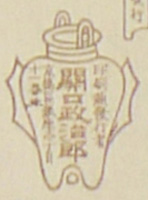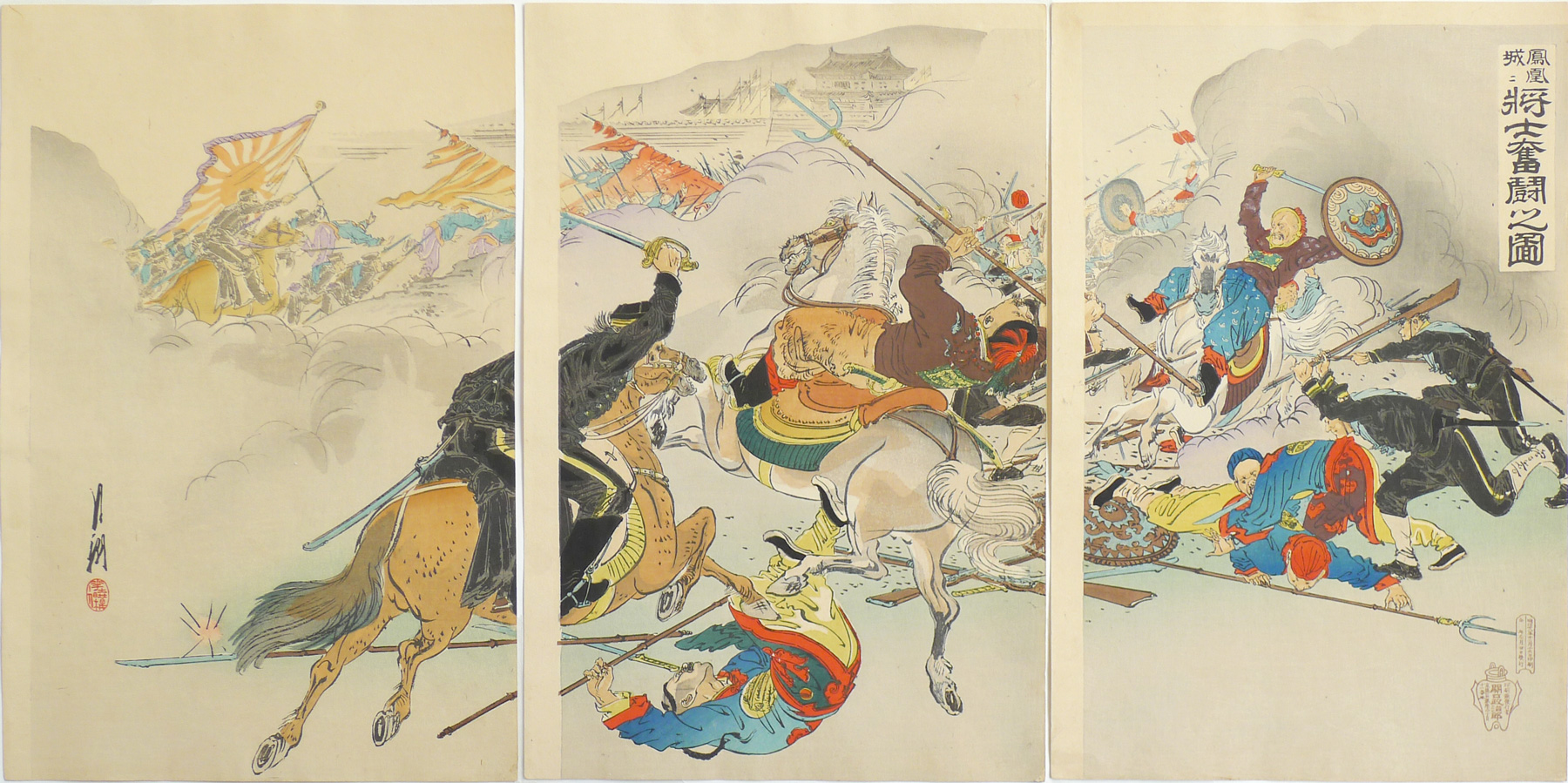About This Print
Picture of the Not So Hard Fight at Fenghuangcheng
This print depicts a battle that was planned by the Japanese as a present for the emperor on his birthday, but did not occur due to a retreat by the Chinese. Historical accuracy was not the aim of most war triptychs.Source: Impressions of the Front: Woodcuts of the Sino-Japanese War, 1894-95, Shumpei Okamoto, Philadelphia Museum of Art, 1983
War correspondent Kubota Beisen (1852-1906) reported: “Our troops were to attack Fenghuangcheng on His Majesty’s birthday, November 3. Scouts reported to General Tatsumi Naobumi that the enemy had set the citadel on fire around 5:00 PM, October 29, and fled. The enemy officers had gone to Mukden, whereas the men escaped to the coast. The following day, the Japanese entered the fort without fighting and found two hundred civilian homes burned down. Two mountain cannons, three mortars, and countless rifles and tents were left.”
The Real Battle
Source: The Sino-Japanese War, Nathan Chaikin, self-published, 1983, p. 93In fact, the real battle took place at Hsin-yen attacked by Mihara on the north-east. The Chinese, having received reinforcements were about 2,000 strong and threatening the Japanese flanks. But the Japanese deployed and dispersed the enemy. As for Hoojo (or Feng-huang-cheng, or Phoenix City), it was a border town and a vital center of strategic roads. The Japanese had planned to attack the city as a present for the Emperor’s birthday (November 3) and win the day. But this hope was shattered as Tatsumi’s scouts reported that on October 29, the Chinese had set fire to the town and abandoned it. Tatsumi entered Feng-huang-cheng on October 20 (without a fight) as all Chinese had retreated north, partly to the Motienling Pass (Heaven-touching Pass) and partly to Hsin-yen and beyond. The Japanese captured two mountain guns, three mortars and a vast array of rifles and ammunition. The real fight came afterward, when the Chinese realized the importance of this center and made several attempts to recapture this city, each one repulsed with heavy losses on the enemy’s side.
Print Details
| IHL Catalog | #254 |
| Title or Description | Illustration of the Hard fight at Fenghuangcheng (Also translated as Japanese Officers and Soldiers Fight Bravely at Fenghuangcheng) Hōōjō ni shōshi funtō no zu 鳳凰城ニ将士奮闘之図 |
| Artist | Ogata Gekkō (1859-1920) |
| Signature |  |
| Seal | Kagyōrō 華暁樓 (see above) |
| Publication Date | November 1894 (Meiji 27) |
| Publisher |  [Marks: pub. ref. 462; seal not shown] |
| Impression | excellent |
| Colors | excellent |
| Condition | excellent - light soiling |
| Genre | ukiyo-e - senso-e (Sino-Japanese War) |
| Miscellaneous | |
| Format | vertical oban triptych |
| H x W Paper | 14 5/8 x 9 7/8 in. (37.1 x 25 cm) each sheet |
| Literature | The Sino-JapaneseWar, Nathan Chaikin, self-published, 1983, p. 178, pl. 68; Impressions of the Front: Woodcuts of the Sino-Japanese War, 1894-95, Shumpei Okamoto, Philadelphia Museum of Art, 1983, p. 30, pl. 38 |
| Collections This Print | Philadelphia Museum of Art 1976-75-35; MAK Vienna: Austrian Museum of Applied Arts/Contemporary Art K.I. 14514-020a-c; Tokyo Keizai University Library; Smithsonian Freer Gallery of Art and Arthur M. Sackler Gallery S1999.54a-c; British Library shelfmark: 16126.d.2(56) and 16126.d.3(18); Five Colleges and Historic Deerfield Museum Consortium AC 2000.400.1-3 |
4/19/2020


